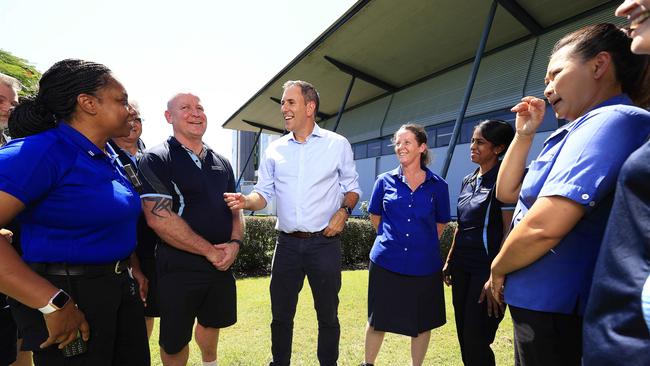
There are now more than 1.5 million extra people in work than before Covid-19 appeared on the scene in early 2020.
Despite the slight rise in the jobless rate to 4.2 per cent last month, the latest figures show the labour market remains tight.
Remember, before the pandemic, the unemployment rate was 5.2 per cent.
Even with the record inflow of migrants boosting labour supply – with more than one million foreign students, backpackers and workers arriving over the past two years – the economy keeps generating employment for them.
EY chief economist Cherelle Murphy reckons July was “ladies’ month in the labour market”, with women getting five-in-six of the new jobs and the female workforce participation rate reaching a record high of 63.2 per cent.
“The 4.2 per cent unemployment rate remains below the Reserve Bank’s estimates of full employment, meaning it’s likely still putting upward pressure on inflation,” Murphy said.
Taken together, that means the RBA will keep interest rates at a “restrictive” 4.35 per cent, where they have been since November, while its peer central banks in the United Kingdom, Canada, and now New Zealand, are easing the monetary squeeze.
The total workforce participation rate, now at 67.1 per cent, continues to hit highs every month
Commonwealth Bank senior economist Belinda Allen says “ample employment opportunities and cost-of-living pressures are pulling workers into the labour force” but there’s a slow easing at play over coming months”.
“We still expect the labour market to loosen from here,” Allen noted on Thursday.
“But we admit this is taking longer to occur than we had expected, especially on the employment front.”
Economists are puzzled by an insipid economy that is growing at around an annual 1 per cent but is generating new jobs at three times that rate.
The simple explanation is the so-called “care economy”, with strong job gains in disability, aged care, health and other social services, where government is the main funder.
This is off the back of state and federal government spending sprees, which RBA governor Michele Bullock declared is keeping the level of demand ahead of supply and adding to inflation.
While expecting the jobless rate to keep rising into next year, ANZ’s head of Australian economics Adam Boyton said “the robustness evident in jobs growth is at odds with market pricing for a 2024 rate cut in Australia”.
Bullock’s dalliance last week with forward guidance – she said “a near-term reduction in the cash rate doesn’t align with the board’s current thinking – means that other than a marked change in the inflation or employment outlook, rates are on hold until next year.
Bullock and her posse of senior officials will appear before the house economics committee on Friday morning, where they will be grilled on the role expansionary budget policies are having on inflation, amid a dismal productivity performance.
Some economists foresee a rebound in productivity growth, which would mean comfortably sustaining current levels of wage growth without creating the unit labour cost pressures that fuel inflation, especially in services.
So far, that important part of our post-pandemic story has been crushingly unspectacular.






Australia’s post-pandemic employment spectacular rolls on.